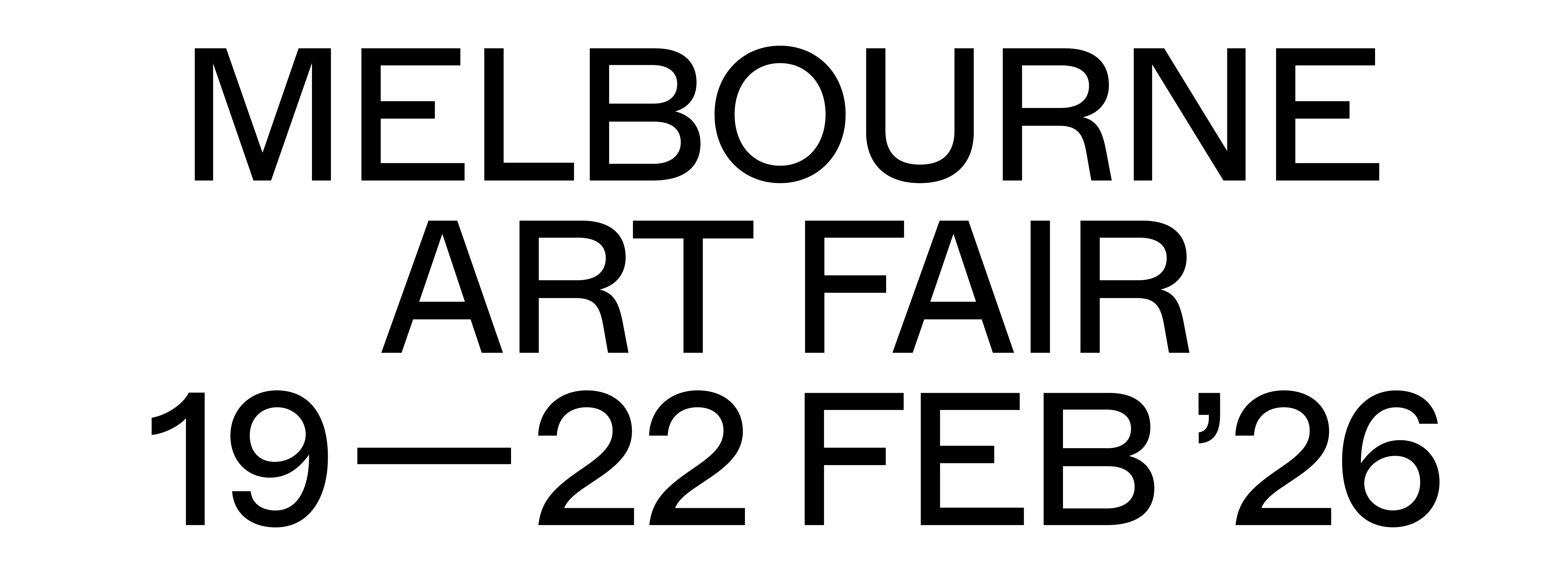Mitch Mahoney on ‘Gurnbak’, Commissioned By the Victorian First Peoples Art & Design Fair Showcase and More
Multidisciplinary artist Mitch Mahoney focuses on the revitalisation of South-Eastern Aboriginal practices, creating cultural items such as possum skin cloaks, traditional canoes and kangaroo tooth necklaces. He is the recipient of the inaugural Victorian First Peoples Art and Design Fair Commission and his work, Gurnbak premiered at Melbourne Art Fair 2025.
Speaking with Melbourne Art Fair, he expands on his practice, how he collects his materials whilst maintaining a deep respect for Country, and his hopes for the VFPADF.
Your work, Gurnbak (Goodoo, Mulloway, Long tail), premiered at Melbourne Art Fair as part of the Victorian First Peoples Art and Design Fair Showcase. Can you describe the work and your process when creating it?
Gurnbak was created through the process of fish printing which is also known as gyotaku. This work was also mixed with an overlay of Southeast Indigenous line work. Gurnbak is created as a way to bring my passion for waterways into my work. The fish seen in the work were acquired through different methods to highlight the different ways we as humans, interact with fish and waterways and spark conversation around fish farming, commercial fishing, and wild-caught fish.
 Mitch Mahoney, Gurnbak (Goodoo, Mulloway, Long tail), installation view. Melbourne Art Fair 2025. Photo: Cristina Ulloa Sobarzo.
Mitch Mahoney, Gurnbak (Goodoo, Mulloway, Long tail), installation view. Melbourne Art Fair 2025. Photo: Cristina Ulloa Sobarzo.
Much of your work focuses on revitalising South-Eastern Aboriginal practices such as creating possum skin cloaks. How did you initially learn these practices?
All my knowledge was passed to me from my family in the beginning of my practice. Together as a family we would attend workshops and make possum skin cloaks as well as spend time together collecting materials and creating different objects.
Your works, including Kampitya (Father), represent a deeply entwined connection between the work and nature. How does the physical process of creating help you connect to Country?
For me, the work Kampitya (Father) was about time spent on Country with my own father, meeting other members of the community; particularly Dave Doyle and his family, and being able to go out in the bush and learn about that Country from him. I spent several years learning about coolamon making to work on creating a red gum canoe; an experience that is a defining moment in my learning.
Can you speak to the materials you use and how you source them?
When it comes to materials, I collect from many different places and gather a whole range. Generally, I spend time collecting stringy bark, coolamons, sap, resin and reeds. The main thing about collecting is to know where you are, whose Country it is, and to ask for permission. For myself, I make sure that I’m always considering what effect my collecting will have on Country and ensuring that I’m collecting in a responsible way.
 Mitch Mahoney, Gurnbak (Goodoo, Mulloway, Long tail), installation view. Melbourne Art Fair 2025. Photo: Phoebe Powell.
Mitch Mahoney, Gurnbak (Goodoo, Mulloway, Long tail), installation view. Melbourne Art Fair 2025. Photo: Phoebe Powell.
How do you hope the introduction of the Victorian First Peoples Art and Design Fair will impact Victorian First Peoples artists in future?
For me, I hope that the Victorian First Peoples Art and Design Fair will be a place that can showcase who we are to the wider world, showing the distinctive styles that we use and the breadth and range of our work, but also stating that we are here and we are working hard to continue our practices and knowledge. I also hope that it will create more opportunities for young South-eastern Indigenous artists to continue practising the work they are passionate about and develop their practice into the future.
An initiative of the Victorian Government’s Creative State 2025 strategy, the Victorian First Peoples Art and Design Fair Showcase Exhibition premiered at Melbourne Art Fair, and was driven by the First Peoples Directions Circle – a group of esteemed First Peoples creative leaders who guide the work of Creative Victoria.


